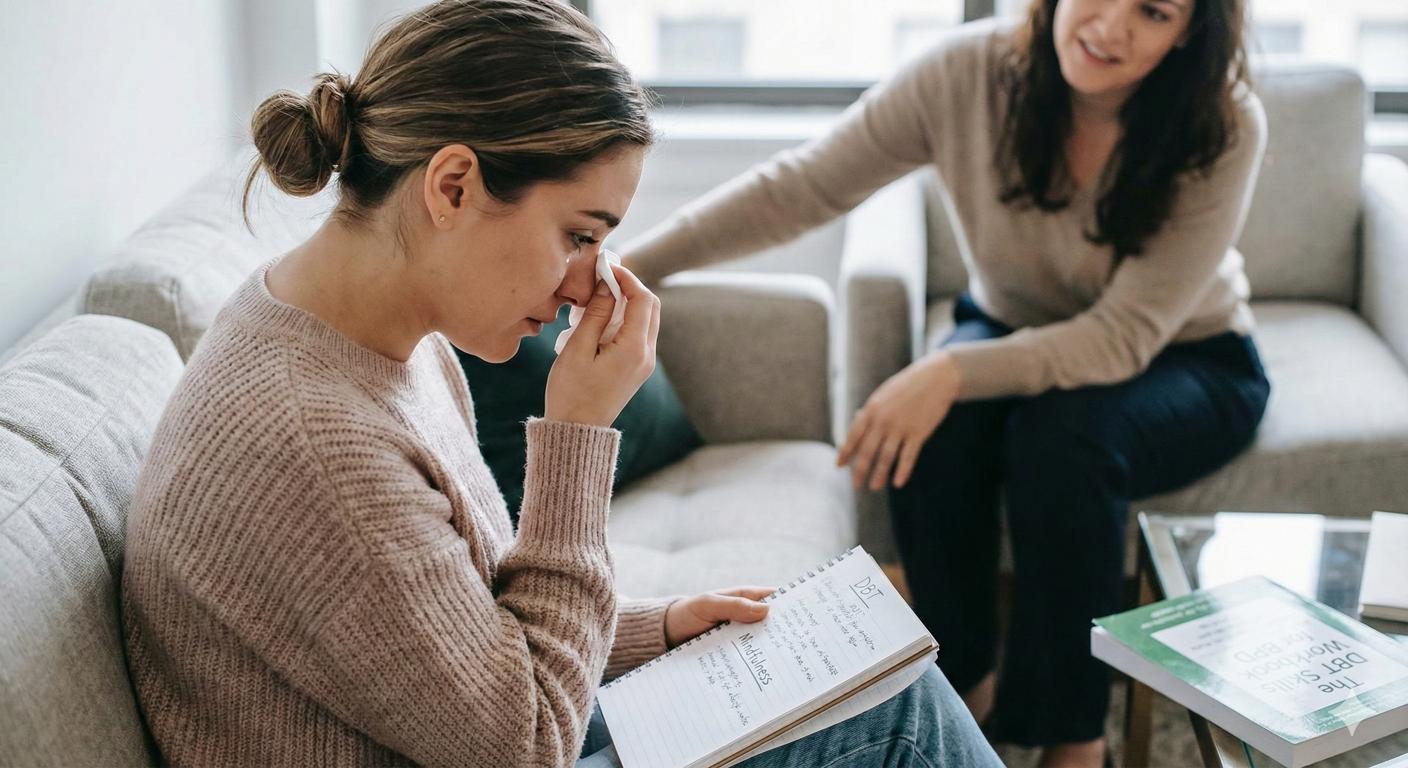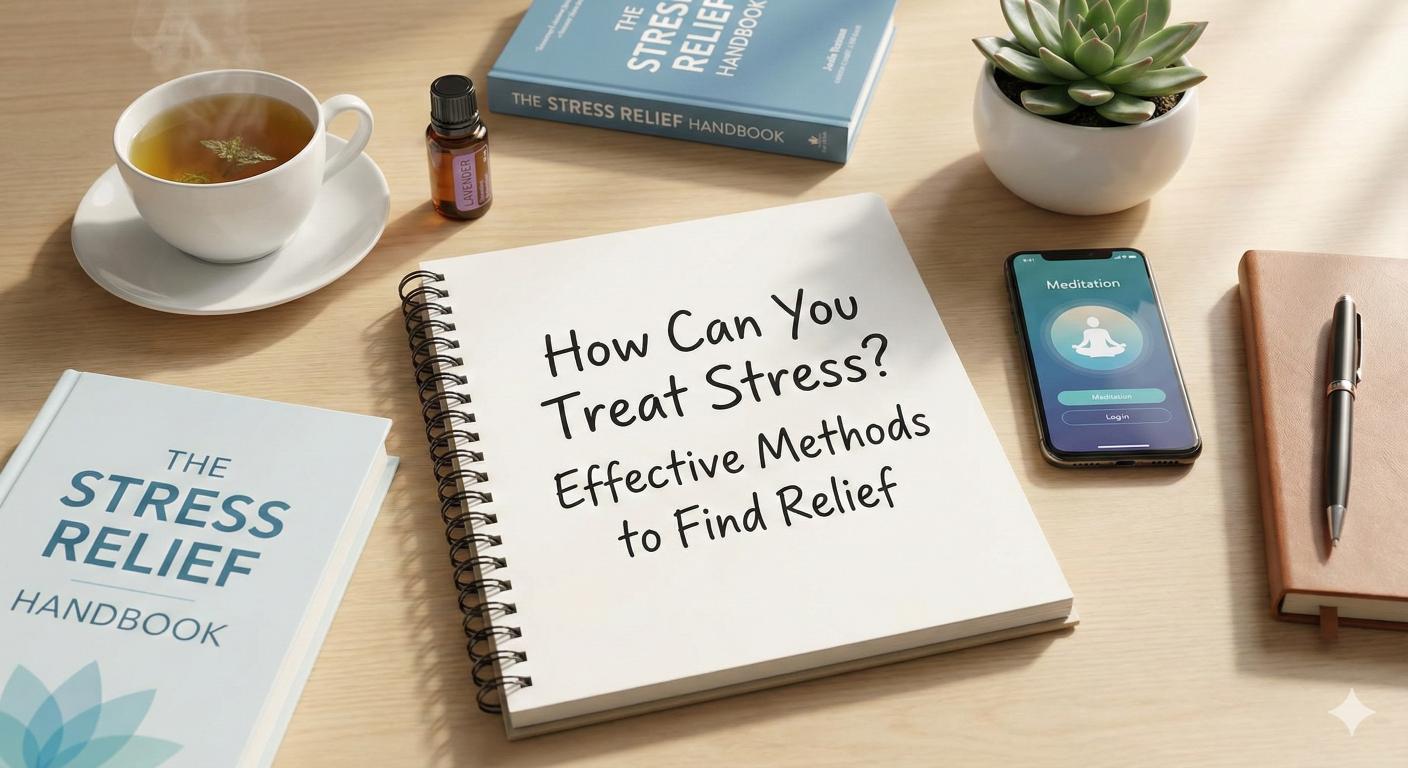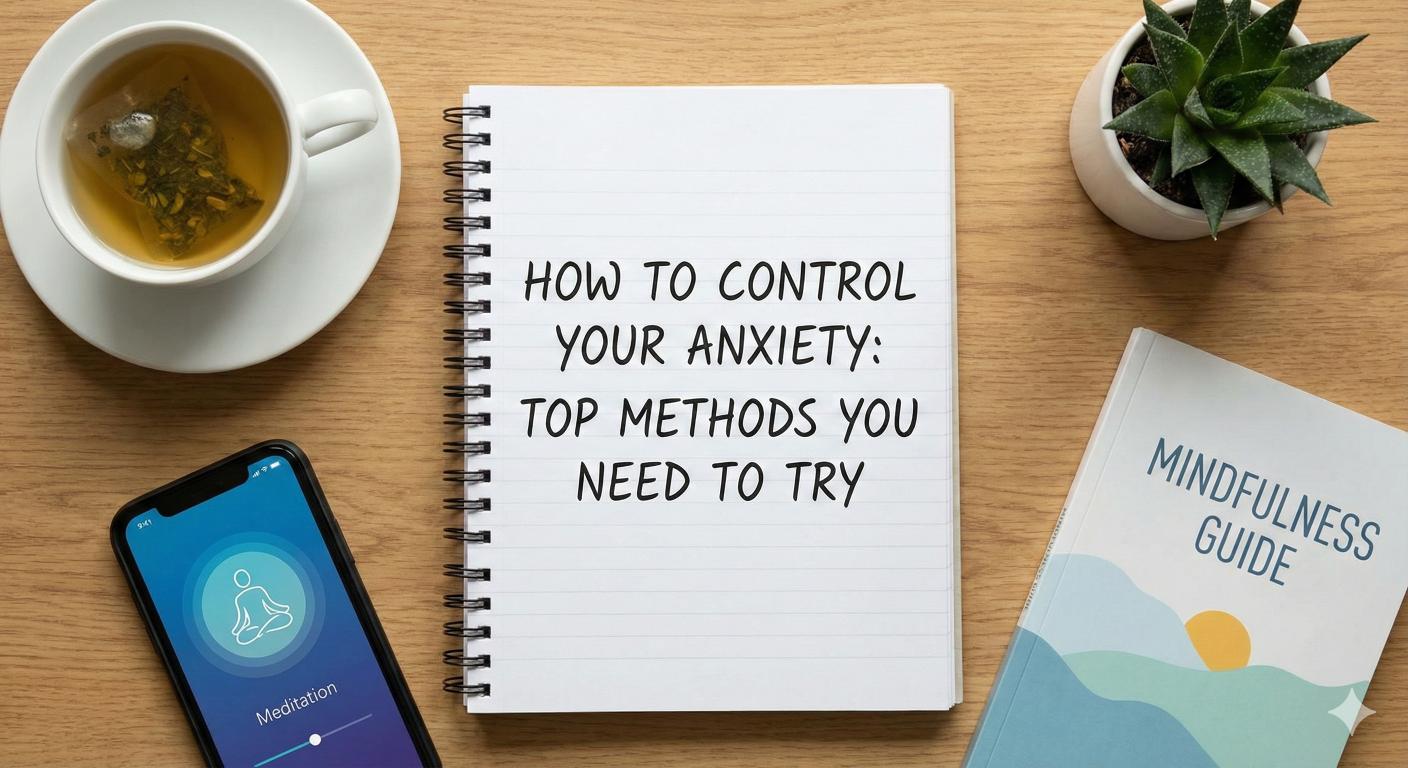Exercise Therapy: Relieving Anxious Feelings through Physical Activity
Discover how exercise can alleviate anxious feelings and boost mental health with effective physical activity.


The Impact of Exercise on Anxiety
Exercise has a significant positive effect on mental well-being, especially in managing anxious feelings. Regular physical activity not only serves as a powerful tool against anxiety but also brings about various changes in one's mood and emotional state.
Benefits of Aerobic Exercise
Aerobic exercise has been recognized for its myriad benefits in reducing anxiety levels. Regular participation can decrease overall tension, elevate and stabilize mood, improve sleep, and enhance self-esteem. Just about five minutes of aerobic activity can begin to stimulate anti-anxiety effects [1].
Aerobic activities may include walking, running, cycling, or dancing, making them easily accessible for anyone looking to enhance their mental health. Here is a quick overview of the benefits associated with aerobic exercise:
BenefitDescriptionDecreased TensionLowers feelings of stress and anxietyElevated MoodBoosts overall happinessImproved SleepEnhances sleep qualityBoosted Self-EsteemIncreases confidence levels
These benefits demonstrate how engaging in simple aerobic activities can drastically enhance emotional health.
Quick Relief from Depressed Mood
Exercise can also serve as a fast-acting remedy for feelings of depression. Many individuals experience elevated moods after participating in physical activity, with effects comparable to taking an aspirin for a headache [1]. Simple activities such as a brisk walk or jogging can provide hours of relief.
Furthermore, physically active individuals show notably lower rates of anxiety and depression compared to their sedentary counterparts. Engaging in regular vigorous exercise reduces the likelihood of developing anxiety disorders by 25% over a span of five years [1].
Aerobic workouts act as effective stress relievers, as they release endorphins, which are known as feel-good hormones. This process can act similarly to meditation, allowing individuals to focus on their movements while temporarily distracting themselves from everyday worries.
Overall, integrating aerobic exercise into daily life can provide immediate and lasting relief from anxiety and depressive moods. It is an accessible, scientifically supported method for anyone interested in managing anxiety more effectively. For additional anxiety management strategies, consider exploring our section on managing chronic worry or learning about coping with anxiety during major life changes.

Relationship Between Physical Activity and Mental Health
Physical activity has a profound impact on mental well-being. Numerous studies have shown that engaging in regular exercise can significantly reduce the rates of anxiety and depression among individuals.
Lower Rates of Anxiety and Depression
Physically active individuals typically exhibit lower rates of anxiety and depression compared to those who lead sedentary lifestyles. According to findings from the ADAA, individuals who participate in regular vigorous exercise are 25% less likely to develop depression or an anxiety disorder within five years.
The table below illustrates the potential benefits of varying levels of physical activity on mental health:
Activity LevelRisk Reduction of Anxiety/DepressionSedentaryBaseline RiskModerate Exercise15% ReductionVigorous Exercise25% Reduction
These statistics highlight the essential role that exercise plays in supporting mental health by aiding the brain in managing stress. Moreover, regular physical activity can punch above its weight when it comes to offering long-lasting relief from depressive symptoms. For instance, some find that even simple exercises like brisk walking can elevate mood for several hours, providing comfort similar to taking pain relief medication for a headache [1].
Varied Responses to Exercise Therapy
Responses to exercise therapy can vary significantly among individuals, particularly for those who struggle with anxiety. While many enjoy the immediate mood-lifting effects of physical activity, others may find that increased physical engagement presents challenges. For example, individuals with anxiety may naturally tend to be more sedentary and perform less intense forms of exercise, leading to potential complications, such as cardiovascular problems and diabetes [3].
Regular participation in physical activity has been associated with a protective effect against mental disorders. Reports indicate that adults who maintain an active lifestyle experience fewer symptoms of anxiety and depression [4]. To harness these benefits successfully, understanding personal responses to exercise is vital for individuals seeking to incorporate physical activity into their anxiety management strategies.
For individuals looking for more structured support, exploring therapies and strategies on managing chronic worry or identifying anxiety triggers may provide a holistic approach to enhancing mental health.

Effectiveness of Exercise in Managing Anxiety
Exercise has emerged as a compelling method for managing anxiety, with research showing that it can be as effective as traditional medication for some individuals. The following sections examine the comparison between exercise and medication, as well as the long-term alleviation of anxiety symptoms through regular physical activity.
Comparing Exercise to Medication
Regular physical activity can provide relief from anxiety symptoms comparable to that of certain medications. Studies indicate that a single vigorous exercise session can alleviate symptoms for several hours, making it an immediate source of relief for anxious feelings. However, the benefits can be further enhanced by maintaining a consistent exercise routine over time. According to the Anxiety and Depression Association of America (ADAA), this sustained activity may lead to significant reductions in both anxiety and depression symptoms.
MethodInitial ReliefLong-Term EffectsExerciseHoursSignificant reduction over timeMedicationVariesOften continues as long as taken
The comparison highlights that while both exercise and medication offer relief, the former also promotes overall physical health, which can further enhance mental well-being.
Long-Term Alleviation of Symptoms
Engaging in regular exercise not only provides immediate benefits but also contributes to long-lasting improvements in mental health. Consistent physical activity can lead to noticeable improvements in symptoms related to anxiety and depression. According to the Mayo Clinic, the long-term effects of exercise on depression and anxiety can be substantial, making it a crucial part of an individual's strategy for managing stress [5].
Exercise fosters a sense of mastery and control, boosts self-confidence, and increases energy levels, all of which are essential for reducing anxiety. This multifaceted impact of exercise makes it a powerful tool in addressing mental health challenges, as indicated by multiple studies showing its efficacy in treating anxiety disorders and clinical depression [6].
To effectively utilize exercise as a therapeutic approach, it is essential to find enjoyable activities that can be incorporated into daily routines. For more insights into managing anxiety and stress through physical activity, refer to our articles on reducing stress through lifestyle changes and building resilience against anxiety.
By recognizing how exercise can alleviate anxious feelings and improve overall well-being, individuals have the opportunity to take proactive steps toward better mental health.
Guidelines for Exercising to Combat Anxiety
Recommended Weekly Activity Levels
To effectively manage anxiety through physical activity, individuals should aim to meet the recommended exercise guidelines. For most healthy adults, the U.S. Department of Health and Human Services recommends at least 150 minutes of moderate aerobic activity each week or 75 minutes of vigorous aerobic activity. Additionally, incorporating strength training exercises for all major muscle groups at least twice a week is advisable to enhance overall health benefits.
Activity TypeDuration per WeekModerate Aerobic150 minutesVigorous Aerobic75 minutesStrength Training2 times
Regular participation in these activities can lead to significant improvements in symptoms of depression and anxiety.
Long-Term Benefits of Regular Exercise
Engaging in a consistent exercise routine not only alleviates immediate feelings of anxiety but also offers long-term psychological benefits. Regular physical activity can lead to lasting improvements in mental health, often making a measurable difference in individuals' emotional well-being. The positive effects of exercise include:
The benefits become even more pronounced when a diligent exercise routine is maintained over time. Regular activity can also lower blood pressure, improve cholesterol levels, and reduce blood sugar, leading to a healthier and more balanced life.
To dig deeper into managing anxiety, individuals can find additional resources on building resilience against anxiety or learn about dealing with nervousness in social settings. Regular exercise is not only a powerful tool for coping with anxiety but also contributes to a healthier lifestyle overall.
Mechanisms Behind Exercise and Anxiety Relief
Understanding how exercise impacts anxiety involves exploring both physiological effects and biochemical responses within the body.
Physiological Effects of Exercise
Exercise triggers several physiological changes that positively influence mental health. Regular physical activity can lead to substantial improvements in anxiety and depression symptoms, contributing significantly to individual mental well-being. The Mayo Clinic states that these benefits may be long-lasting if maintained over time.
Here are some physiological effects of exercise that can help alleviate anxious feelings:
EffectDescriptionEndorphin ReleaseExercise promotes the release of endorphins, which are chemicals in the brain that act as natural painkillers and mood elevators.Reduced Muscle TensionPhysical activity can help to relieve muscle tension, which is often associated with anxiety and stress.Improved Sleep QualityRegular exercise aids in better sleep patterns, which can be disrupted by anxiety.Increased Energy LevelsMore physical activity can lead to greater energy levels, enabling individuals to face daily challenges more effectively.
How exercise can alleviate anxious feelings is not solely the result of endorphin release; it also provides a powerful distraction from daily worries. Exercise can act as what some refer to as "meditation in motion," allowing individuals to focus on their body's movements rather than stressors [2].
Activation of Endogenous Opioids
In addition to endorphins, exercise activates endogenous opioids, substances produced within the body that have pain-relieving properties. These opioids contribute to feelings of euphoria, which can sustainably improve mood. Research shows that vigorous exercise can provide relief from anxious symptoms for hours, making it an effective short-term strategy.
This biochemical response, combined with long-term physical activity, may significantly reduce anxiety symptoms over time, similar to the effects of medication for some individuals [1]. Regular aerobic exercise, such as biking, dancing, or brisk walking, has been particularly effective in treating chronic anxiety [3].
By understanding these mechanisms, one can better appreciate the multifaceted ways that exercise contributes to mental health. For more insights into managing chronic worry, check out our resource on managing chronic worry.
Psychological Factors in Exercise and Anxiety
Understanding the psychological factors behind how exercise affects anxiety can provide valuable insights into managing anxious feelings. Two primary mechanisms are anxiety sensitivity and exposure, along with self-efficacy and distraction.
Anxiety Sensitivity and Exposure
Anxiety sensitivity refers to the fear of anxiety-related sensations, which can exacerbate feelings of anxiety. Through exercise, individuals may confront and experience these physiological symptoms, thereby increasing their tolerance to anxiety-related sensations. Engaging in physical activity can help reduce anxiety sensitivity by providing a controlled environment to experience discomfort without the negative repercussions associated with purely anxiety-provoking situations. As a result, exercising can help desensitize individuals to these sensations, lowering their overall anxiety levels.
Research indicates that exposure to physical sensations during exercise facilitates this coping mechanism. Participants often report a greater sense of control over their anxiety once they see that they can experience discomfort during exercise without adverse effects.
Self-Efficacy and Distraction
Self-efficacy, or the belief in one's abilities to manage tasks and challenges, plays a significant role in reducing anxiety. When individuals engage in regular exercise, they often experience improvements in self-efficacy, which can lead to reduced anxiety arousal. As individuals set and achieve fitness goals, they gain confidence in their capacity to handle challenges both inside and outside the gym.
Moreover, exercise acts as a distraction from daily stressors, providing a temporary escape from anxiety-inducing thoughts and situations. This distraction enables individuals to redirect their focus away from worries that might otherwise contribute to heightened anxious feelings. Psychological factors such as self-efficacy and distraction contribute significantly to the exercise-anxiety relationship, thus illustrating how physical activity can serve as an effective coping strategy. For more insights on managing anxiety, visit our articles on managing chronic worry and reducing stress through lifestyle changes.
By understanding and leveraging these psychological factors, individuals may find exercise to be a potent tool for alleviating anxious feelings and improving overall mental health.
References
[2]:
[3]:
[4]:
[5]:
[6]:
More Resources
A team ready to start your journey.
Get in touch — today.
We are a safe space – a haven for exceptional individuals to receive discreet, personalized, in-person treatment and care.
.avif)










